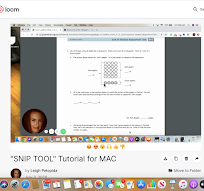Pecha Kucha: Finding My Why

Pecha Kucha: Finding My Why After being shifted around a little bit at the beginning of my teaching career, I had settled into a position as a third grade teacher. I was in a wonderful, close-knit neighborhood school. I worked with dedicated and supportive teachers. My daughter was a kindergartener there. I was happily moving along in my teaching career, and I would have loved to stay there forever. But then three years ago, after 6 years in my position, my principal walked in my classroom with a sad look on her face and closed the door behind her. “You’re being involuntarily transferred,” she said. My district was expanding their Dual Language Immersion program, and I had the certification that was needed. So off I went to a different school, teaching a different grade, and in a new program. I dove in though and had a positive attitude about it. Who knows, maybe I would grow to love teaching in the DLI program? ...



